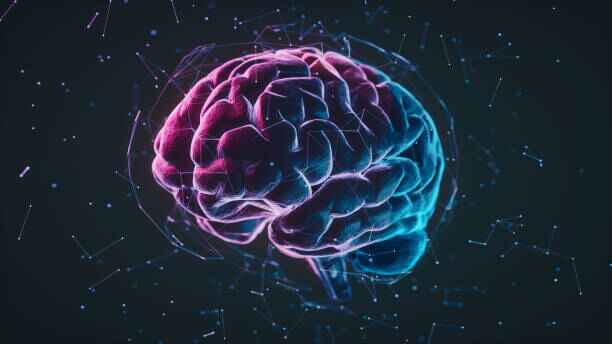Let’s face it- life can be heavy. Amidst the continuous discussion of work, relationships, and social media, it is no wonder that mental health issues are increasing. But there is good news here: Artificial Intelligence (AI) is taking steps to help in ways that we could not imagine a few years ago. By 2025, AI is fully ready to change how we see mental health therapy, making it more accessible, personal, and effective. Let us note how this technique is changing the game and what it means to you.
Why AI in Mental Health is a Big Deal
Mental health conflicts are more common than you can think. In the US alone, 1 out of 5 adults belong to a mental health condition each year. But traditional medicine is not always easy to arrive at – whether due to high cost, prolonged waiting time, or just the fear of justice. This is the place where AI comes from. It is breaking the obstacles by offering:
- 24/7 Support: Need someone to talk to at 2 a.m.? AI has your back.
- Personalized Care: No two people are the same, and AI gets that. It tailors therapy to fit your unique needs.
- Affordable Options: Let’s be real—therapy can be expensive. AI provides cost-effective alternatives without sacrificing quality.
How AI is Changing the Therapy Game
Here’s a look at some of the coolest ways AI is making waves in mental health therapy:
1. AI Chatbots: Your 24/7 Mental Health Buddy
Never want you to talk to anyone about your stress or anxiety without waiting for weeks for an appointment? AI chatbots like Woebot and Wysa are here to help. These bots use natural language processing (NLP) to understand what you are saying and offer practical, evidence-based advice.
- Example: Feeling anxious? A chatbot might guide you through a quick breathing exercise or suggest a mindfulness technique.
2. Virtual Therapists: Therapy Without the Couch
Imagine being a physician who is available anytime, anytime available. Virtuous physicians such as Ellie (developed by USC) use AI to simulate a conversation like a human. They can also lift on subtle signals like your tone.
- Example: Ellie has been used to help veterans with PTSD by analyzing their emotions during conversations.
3. Mood-Tracking Apps: Your Mental Health Diary
Apps like Moodpath and Sanvello use AI to track your moods and identify patterns over time. If the app notices you’re feeling down, it might suggest a guided meditation or journaling exercise to help you feel better.
- Example: If you’ve been feeling low for a few days, the app might nudge you to try a new coping strategy.
4. Predictive Analytics: Spotting Problems Before They Escalate
AI can analyze data to predict mental health crises before they happen. For instance, it can flag someone at risk of suicide based on their online behavior or communication patterns.
- Example: Facebook’s AI algorithms have been used to detect posts indicating suicidal thoughts and alert authorities.
5. Personalized Therapy Plans: One Size Doesn’t Fit All
AI can analyze your history, preferences and progress that is to make a medical plan that is for you. Whether you need cognitive-behavior therapy (CBT) for anxiety or dialectical behavior therapy (DBT), AI may recommend the best approach, for emotional regulation.
- Example: An AI system might suggest CBT for someone with anxiety and DBT for someone with borderline personality disorder.
The Upside of AI in Mental Health
- Accessibility: AI makes mental health support available to people in remote areas or those who can’t afford traditional therapy.
- Anonymity: Let’s be honest—talking to a bot can feel less intimidating than opening up to a human therapist.
- Scalability: AI can help millions of people at once, easing the burden on mental health professionals.
The Challenges: It’s Not All Sunshine and Rainbows
As amazing as AI is, it’s not perfect. Here are some challenges to keep in mind:
- Privacy Concerns: AI systems collect a lot of sensitive data, so it’s crucial to ensure that information is secure.
- Lack of Human Touch: While AI can offer support, it can’t fully replicate the empathy and understanding of a human therapist.
- Bias in Algorithms: If AI systems aren’t trained on diverse datasets, they can unintentionally perpetuate biases.
What’s Next for AI in Mental Health?
By 2025, AI is expected to play an even bigger role in mental health therapy. Here’s what’s on the horizon:
- Integration with Wearables: Imagine your smartwatch not only tracking your steps but also monitoring your mental health in real time.
- Hybrid Therapy Models: Combining AI tools with human therapy for the best of both worlds.
- Global Reach: AI has the potential to bring mental health support to underserved populations worldwide.
How You Can Get Started with AI Mental Health Tools
Curious about trying AI-driven mental health tools? Here’s how to dip your toes in:
- Try an AI Chatbot: Apps like Woebot and Wysa are great for daily emotional support.
- Use Mood-Tracking Apps: Keep tabs on your mental health with apps like Moodpath or Sanvello.
- Explore Virtual Therapists: If you’re curious about AI therapy, look into programs like Ellie or other virtual therapist platforms.
- Stay Informed: Follow updates on AI in mental health to see what’s new and how it can help you.
Final Thoughts
AI is bringing a revolution in mental health therapy, and by 2025, it is a big part of how we take care of our brains. Whether you are looking for 24/7 support, personal medicine, or a way to track your mood, AI has anything. On Mindthearpy.com, we are excited about the ability of AI to make mental health care more accessible and effective for all.



